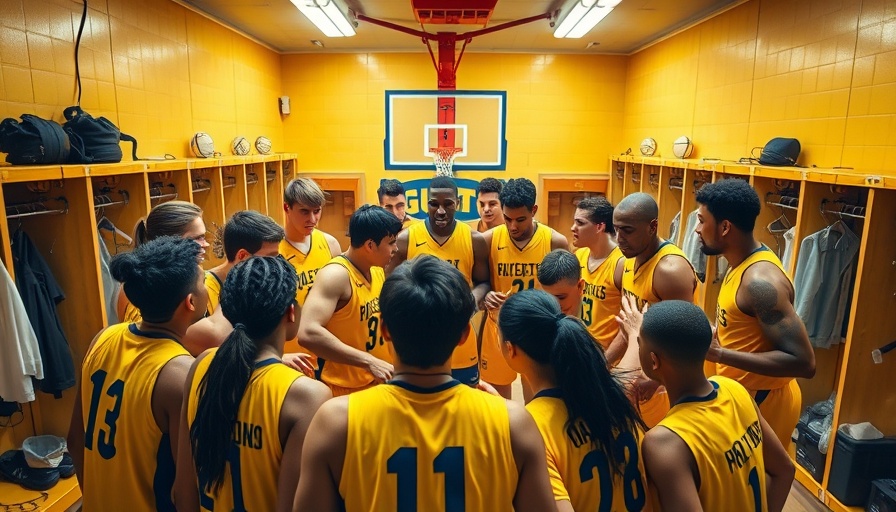
Unpacking the Importance of Image in Sports
In the world of professional sports, appearances can often be as vital as performance on the field. Just like athletes strategize for games, they must also consider the visual impact they leave on their audience. This is exemplified in recent discussions surrounding Kendrick Perkins' outfit change on air, where he openly shared his reasons for switching looks during an appearance.
In 'Big Perk needed an outfit change 😂', the discussion dives into how image impacts confidence in sports, exploring key insights that sparked deeper analysis on our end.
Perkins explained that his initial outfit made him feel heavy, affecting not only his appearance but also his confidence. This moment highlights how crucial self-image is for athletes, especially when they are in the public eye. For many athletes, the way they present themselves can influence their public persona, marketing appeal, and even performance in games, a statement that rings true across various sports.
Fashion and Athletic Performance: A Necessary Connection
When we examine how athletes curate their looks, it goes beyond mere vanity. Perkins' switch to a more flattering outfit reflects an understanding of personal branding. Just as NBA highlights can showcase a player's skill, a well-chosen outfit can speak volumes about their personality and confidence. The connection between fashion choices and athletic identity is increasingly recognized, with athletes like Stephen Curry and LeBron James making waves in lifestyle and fashion industries.
In the same vein, attire has psychological implications. Confidence derived from looking good can directly affect an athlete's performance. With Perkins aiming for a slimming look, it’s clear that visual appeal is tied to first impressions—something echoing in everything from NCAA recruiting updates to the NFL draft rumors, where how a player presents themselves can play a significant role in their career trajectory.
Cultural Reflections: Fashion in Sports
Fashion within the sports realm often goes hand-in-hand with societal trends, echoing wider cultural shifts. The NBA, in particular, has been at the forefront of this intersection, with players often seen as trendsetters both on and off the court. The adjustments Perkins made serve as a reminder that professional athletes are increasingly aware of how their outfits can communicate messages about their professionalism and persona.
This reframing of appearance resonates in various sports contexts, contributing to how college sports rankings and the profiles of athletes evolve over time. With college basketball news highlighting athletes from diverse backgrounds, individuality expressed through fashion can build a narrative that captivates fans and boosts engagement.
Why You Should Care About Athlete Image
Understanding the nuances of image in sports isn’t merely for fashion enthusiasts; it’s a window into how athletes navigate their careers. The conversations surrounding Perkins' outfit choices inspire questions regarding mental health, body image, and the expectations placed on professional athletes. As the industry continuously evolves—like with the Super Bowl 2025 headlines and NFL injury reports—athletes' ability to manage public perception is crucial.
As a viewer or fan, acknowledging this aspect can deepen your appreciation for the performances you witness, whether it’s during the NBA playoffs or watching the U.S. Open tennis matches. It reminds all of us that behind the statistics, scores, and player highlights, there are individuals striving for self-assurance, both on and off the field.
Final Insights: Encouraging Positive Change
In an industry often critiqued for its pressures, Perkins' story is an empowering message. Athletes should feel free to express themselves through their attire, finding confidence in how they choose to showcase who they are. As discussions around topics such as mental health and body positivity gain traction in sports, recognizing the small yet significant shifts—like outfit changes that suggest deeper motivations—encourages a more holistic understanding of athletes.
So next time you tune into a game or follow college football scores, consider the narratives behind the uniforms beyond the surface level. Perkins reminds us that sometimes, the change we need isn’t merely on the scoreboard but rather in the way we present ourselves to the world.
 Add Element
Add Element  Add Row
Add Row 



 Add Row
Add Row  Add
Add 


Write A Comment